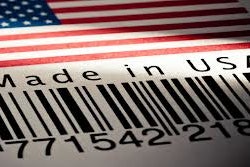Avoiding antitrust situations is paramount in the ongoing tide of food mergers and acquisitions. The newly reignited case against dairy manufacturer Dean Foods by retailer Food Lion straddles the pair of definitions that guides antitrust rulings.
The food market is always ripe for antitrust litigation, particularly in the case of staples like the dairy products Dean Foods manufactures.
“Courts and enforcers pay attention to commodities like milk because everyone needs it,” said Saul P. Morgenstern, co-chair of the antitrust practice group and partner at Kaye Scholer LLP in New York City, in an interview with Food Manufacturing. “The price of milk goes up and people pay for it.”
And that’s exactly what happened in the case at hand. In 2001, the Department of Justice anticipated the merger of the nation’s leading dairy processing powerhouses Dean Foods and Suiza Foods would lead to a 2.9 percent increase in dairy product prices within their territory. At the time, Dean sourced raw milk primarily from independent producers. Suiza’s milk came from a large marketing cooperative and processor called Dairy Farmers of America, or DFA. The merging companies, operating under the name Dean Foods, submitted their plans for requisite Department of Justice approval.
Since antitrust laws are designed to protect consumers, the DOJ required Dean Foods to spin off some assets, like production facilities, and create a new competitor.
“If you have companies competing openly in a marketplace, consumers benefit from the widest variety of choices and the lowest prices,” Morgenstern said.
So Dean created National Dairy Holdings as a subsidiary of DFA. At the same time, DFA brokered a deal to sell milk to Dean as it had previously to Suiza. Over time, NDH was less successful in the business and had to shutter some processing facilities. DFA sold NDH to Mexican processor Grupo Lala in 2009.
Less competition made for higher prices. An expert testifying for plaintiffs Food Lion et al. using the same research method found that relevant prices actually rose 7.9 percent in the southeastern United States between 2002 and 2007.
Here’s where we get down to the antitrust nitty gritty.
Only agreements that “unreasonably” restrain trade violate antitrust laws, Morgenstern said. He explained that there are two types of antitrust analyses courts use to determine whether an agreement is unreasonable.
The first is a "per se" analysis, which is used for cases where there is a conspiracy to fix prices between two supposedly competing companies. Once the conspiracy is proven, the agreement presumed to be unreasonable and plaintiffs must demonstrate how they were damaged.
The second is the more complicated “rule of reason” analysis. In addition to proving the terms of the agreement, the plaintiffs must prove that it restrained trade in both a product market and geographic market. Then the defendants have the right to show that the agreement also had “procompetitive” effects that balance the restraining effect. An agreement is considered unreasonable if it restrains competition more than it advances it.
In 2012, a U.S. district court ruled that Food Lion et al v. Dean Foods Company fell under the second type of antitrust violation. However, after discovery and litigation, Dean Foods asked the court to dismiss the case on the grounds that Food Lion neither differentiated the cause of the injury nor defined a market that was restrained. The case was dismissed on the grounds there was nothing for a jury to decide.
Later, the plaintiffs petitioned the Sixth Circuit Court of Appeals, which recently ruled that the case should be retried in the district court. The circuit court said that though the case was tried as the second type of antitrust case, it had elements of both. The court said, in this case, there’s no reason to define a market.
“What the court is doing here is inferring that a jury could conclude the additional price difference was attributable to the alleged conspiracy, if they can conclude there was a conspiracy,” Morgenstern said. “They’re making an inference based on the actual market conduct [that damage was done since prices rose].” He anticipated that the district court will eventually hold a jury trial.
The Dean Foods antitrust case holds lessons for manufacturers.
“The bottom line is, if you’re a supplier in the food industry, you have to recognize that the commodity that you’re producing and selling is very important,” Morgenstern said. “When you enter into business arrangements that might have an effect on these markets, it’s a good idea to inquire into antitrust counsel.”























